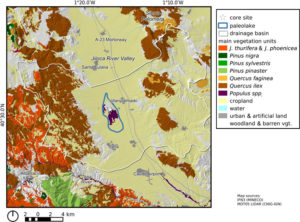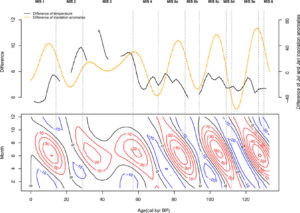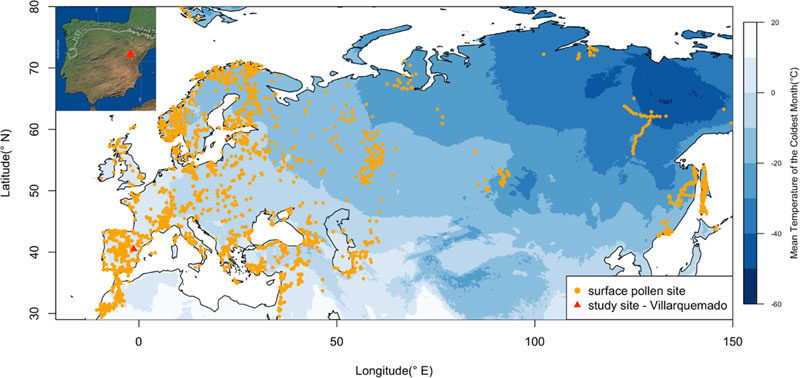The SPECIAL group has a long history of working with scientists from the Instituto Pirenaico de Ecología in Zaragoza, first through the DINAMO3 project and now through the wonderfully named PYCACHU project, both funded by the Spanish Ministerio de Economia y Competitividad. It seems a long time now since members of the team actually visited Zaragoza, or went out into the field with the Zaragoza team. However, the collaboration is nevertheless bearing fruit. Dongyang Wei’s paper on reconstructions of climate change since the penultimate glaciation (MIS6) is now out online in Quaternary Research (https://www.cambridge.org/core/journals/quaternary-research/article/seasonal-temperature-and-moisture-changes-in-interior-semiarid-spain-from-the-last-interglacial-to-the-late-holocene/F54685F2775741F8CCA70DA9A54AB809). In this paper, Dongyang provides reconstructions using of mean temperature of the coldest month (MTCO) and growing degree days above 0°C (GDD0) and the ratio of annual precipitation to annual potential evapotranspiration (MI), accounting for the ecophysiological effect of changing CO2 on water-use efficiency at the classic site of El Cañizar de Villarquemado (Figure 1). The reconstructions were made using a version of Mengmeng Liu’s algorithm for reducing compression bias in climate reconstructions made with Weighted Averaging Partial Least Squares (WA-PLS) by accounting for the climate tolerance of the plant species represented in the pollen assemblages (TWA-PLS). We know that we need to update the results, using Mengmeng’s improved version of TWA-PLS that accounts for the frequency with which climate is sampled in the training data set (see Mengmeng’s last blog post) and also to incorporate a more rigorous method for accounting for changing water-use efficiency under low CO2. Nevertheless, Dongyang’s paper provides a nice picture of how changing seasonality during the last interglacial and glacial reflects insolation forcing (Figure 2). It also shows why it is important to take account of the CO2 effect on water-use efficiency in interpreting glacial climates. The El Cañizar de Villarquemado record has several sedimentary gaps, but nevertheless it does record the climate and vegetation response to several of the rapid climate changes associated with the Dansgaard-Oeschger oscillations during the last glacial too. So this paper is the starting point for ongoing efforts by the SPECIAL group to examine how the climate of the circum-Mediterranean region responded to these events, and our analyses of how land-surface changes might have led to feedbacks to climate.



